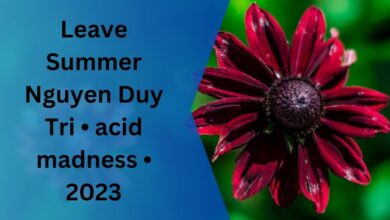Seeds That Look Like A Brain – Click To Gain Knowledge!

Seeds that look like a brain resemble a brain are unique botanical wonders, often found in plants like pumpkins and squashes. Their intricate patterns and distinctive shapes make them fascinating objects of curiosity for nature Fans.
Join us as we explore these intriguing botanical wonders, marvelling at their intricate patterns and uncovering the secrets behind their resemblance to the human brain.
What are seeds that look like a brain? – Discover More Right Away!
Seeds that look like a brain are special seeds from certain plants that resemble the shape and texture of a human brain. Imagine a tiny seed with lots of wrinkles and folds on its surface, just like the folds in our brains! These unique seeds come in different sizes, colours, and textures, but they all have one thing in common: they look like miniature versions of a brain.

seeds that look like brains aren’t just interesting to look at; they also serve important purposes for the plants they come from. Some seeds have wrinkles and folds to help them stick to things, like animal fur or clothing, so they can travel to new places and grow into new plants. Others might have these shapes to protect them from hungry animals that might want to eat them.
Read: Explore Redgif Your Destination for Endless Entertainment
When can you find seeds that look like a brain – Click Here For All The Details!
You can find seeds that look like a brain at different times of the year, depending on the plant they come from. Some plants produce these special seeds during certain seasons, like spring or summer when they’re flowering and making fruits. Other plants might have these brain-like seeds all year round. It’s like how some fruits, like apples or oranges, are more common in certain seasons but can still be found at other times too.
seeds that look like brains are part of the natural world’s amazing diversity, and you might find them in various places. Some people discover them while exploring gardens, parks, or even their own backyard. Others might come across them in books, on the internet, or in science museums.
Why do some seeds look like a brain? – Click To Unlock The Details!
Some seeds that look like a brain a brain because of how they’ve evolved over time. Just like animals change and adapt to survive in their environments, plants do too. The brain-like appearance of these seeds is often a result of natural selection—the process where certain traits that help a plant survive and reproduce become more common over generations.

Other seeds that look like a brain might have this shape to protect them from being eaten by animals, just like how some animals have camouflage to blend in with their surroundings.
Read: Earning Beauty Nguyen Duy Tri • acid madness • 2023
It’s like nature’s way of giving plants different tools to help them survive in the big world. So, even though these brain-like seeds might seem strange, they’re actually super smart in their own special way!
How can you identify seeds that resemble a brain – Learn More In Just One Click!
- Surface Texture: Look for seeds with a wrinkled or convoluted surface, similar to the folds of a human brain. These intricate patterns are a key characteristic of seeds that resemble a brain.
- Shape and Size: Pay attention to the overall shape and size of the seeds. While they may vary in size, seeds that resemble a brain often have a rounded shape with lobes, resembling a miniature version of the human brain.
- Color and Texture: Observe the color and texture of the seeds. While colors may vary depending on the plant species, these seeds typically have a rough and uneven texture due to the wrinkles and folds on their surface.
- Comparison: Compare the seeds you’re examining with images or descriptions of seeds that rsemble a brain. This can help confirm their identity and provide further insighte into their unique characteristics.
- Botanical Knowledge: Familiarize yourself with the plants known to produce seeds that resemble a brain. This knowledge can help narrow down your search and increase the likelihood of identifying these distinctive seeds in nature.
Where can you find seeds that resemble a brain – Get The Scoop With A Click!
| Location | Description |
| Gardens | Explore gardens where plants like pumpkins, squashes, and velvet beans are cultivated. |
| Parks | Take a stroll through parks with diverse plant life, keeping an eye out for unique seeds. |
| Botanical Gardens | Visit botanical gardens that showcase a wide variety of plant species, including those with brain-like seeds. |
| Nurseries | Explore plant nurseries where seeds and plants are sold, inquire about species known for brain-like seeds. |
| Educational Resources | Utilize botanical guides, books, websites, and educational materials to learn about and identify seeds resembling a brain. |
Can seeds that resemble a brain be grown at home? – Learn More Now!
Absolutely! Growing seeds that resemble a brain at home can be an exciting and rewarding experience. While not all plants that produce brain-like seeds are suitable for home cultivation, some varieties can thrive indoors or in garden settings with proper care.

One option for home cultivation is the Cerebriform Fruit plant, also known as the “Brain Plant” or “Cerebriform Plant.” These plants are often grown as ornamentals due to their unique appearance.
They can be cultivated in containers or pots filled with well-draining soil, placed in a location with plenty of sunlight. Regular watering and occasional fertilization can help promote healthy growth and seed production.
FAQs:
1. Are seeds that resemble a brain common or rare?
Seeds resembling a brain are relatively uncommon compared to conventional seeds. While they may not be encountered as frequently as standard seeds, their unique appearance makes them a fascinating subject of interest for botanists and nature enthusiasts alike.
2. Are there any cultural or symbolic meanings associated with seeds that resemble a brain?
Seeds resembling a brain may hold cultural significance in certain societies or traditions. They might symbolize concepts such as fertility, growth, or the interconnectedness of nature and the human mind, contributing to their portrayal in art, literature, and folklore.
3. Do these seeds play a role in the dispersal mechanisms of the plants that produce them, and if so, how?
Yes, seeds that resemble a brain often play a crucial role in the dispersal mechanisms of the plants that produce them. These seeds are typically designed to be dispersed by animals, birds, or even water, aiding in the plant’s reproduction and spread across different habitats.
Conclusion:
seeds that look like a brain resemble a brain offer a captivating glimpse into the intricate wonders of the natural world. These unique botanical specimens, with their convoluted surfaces and distinctive shapes, spark curiosity and fascination among observers.
Read Also:




